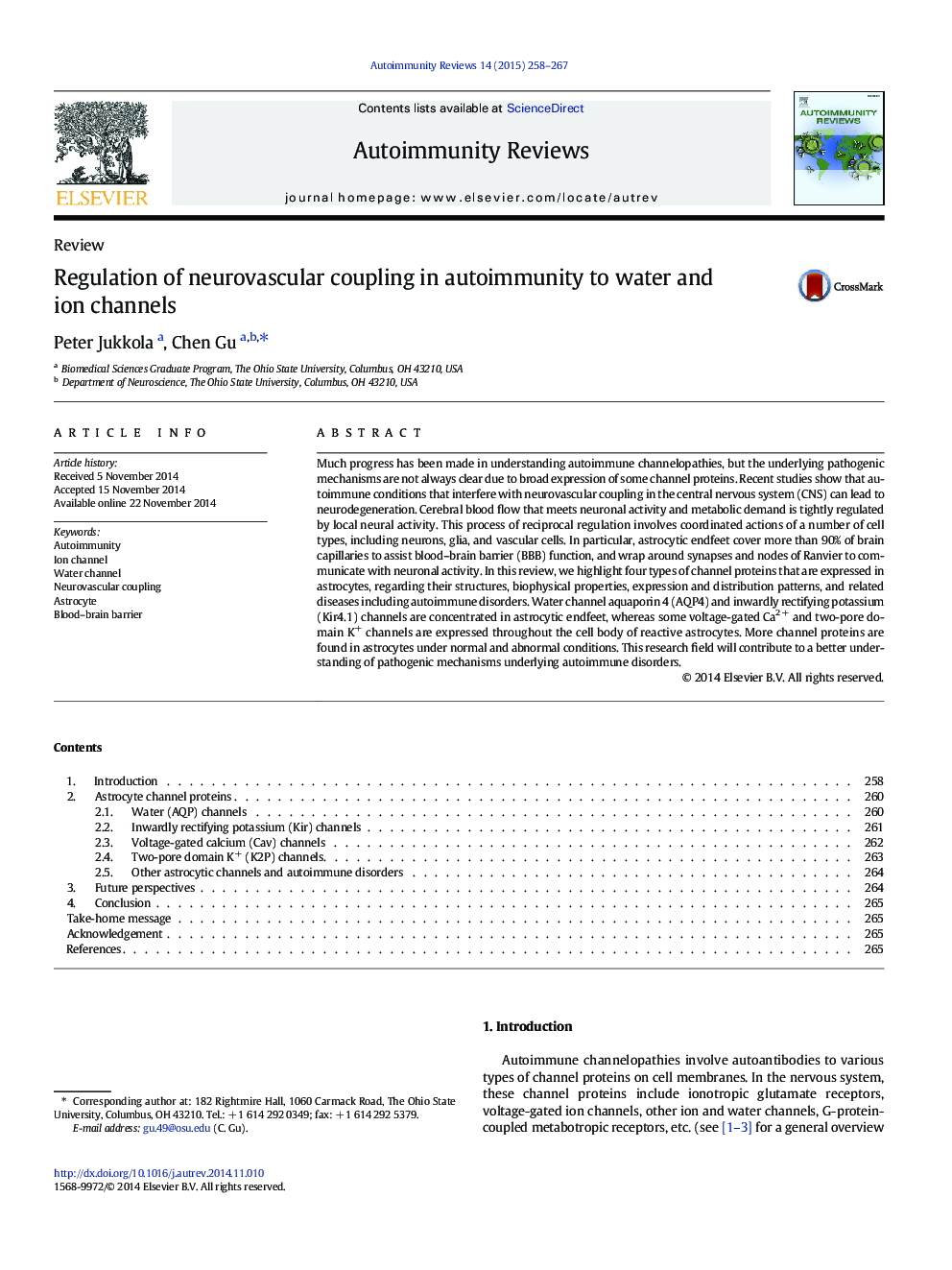| Article ID | Journal | Published Year | Pages | File Type |
|---|---|---|---|---|
| 3341428 | Autoimmunity Reviews | 2015 | 10 Pages |
Much progress has been made in understanding autoimmune channelopathies, but the underlying pathogenic mechanisms are not always clear due to broad expression of some channel proteins. Recent studies show that autoimmune conditions that interfere with neurovascular coupling in the central nervous system (CNS) can lead to neurodegeneration. Cerebral blood flow that meets neuronal activity and metabolic demand is tightly regulated by local neural activity. This process of reciprocal regulation involves coordinated actions of a number of cell types, including neurons, glia, and vascular cells. In particular, astrocytic endfeet cover more than 90% of brain capillaries to assist blood–brain barrier (BBB) function, and wrap around synapses and nodes of Ranvier to communicate with neuronal activity. In this review, we highlight four types of channel proteins that are expressed in astrocytes, regarding their structures, biophysical properties, expression and distribution patterns, and related diseases including autoimmune disorders. Water channel aquaporin 4 (AQP4) and inwardly rectifying potassium (Kir4.1) channels are concentrated in astrocytic endfeet, whereas some voltage-gated Ca2 + and two-pore domain K+ channels are expressed throughout the cell body of reactive astrocytes. More channel proteins are found in astrocytes under normal and abnormal conditions. This research field will contribute to a better understanding of pathogenic mechanisms underlying autoimmune disorders.
